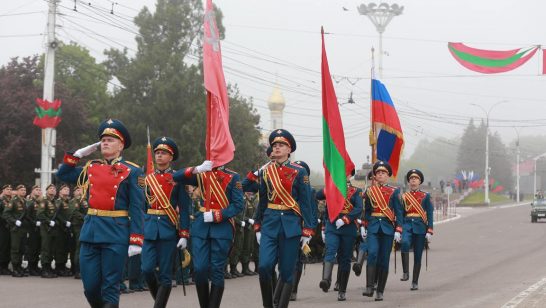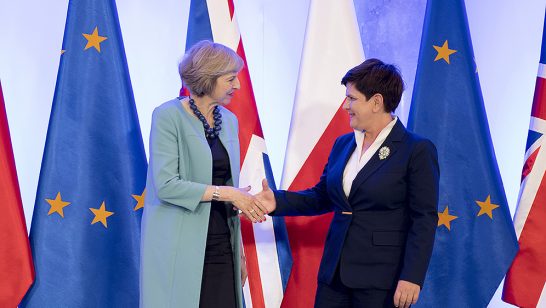
The toppling of the Yanukovich government in Kiev in February 2014 and the subsequent Russian annexation of Crimea, followed by the ongoing conflict in Eastern Ukraine, mark a paradigm shift in the short history of the Ukrainian state. The seismic reassessment of Ukraine’s place in the world by the Ukrainian citizenry and political elite cannot be overestimated. Ukraine’s pivot towards western institutions, and the hostility this has provoked from Moscow, has been well documented. What is less understood is the alteration this has wrought in Ukraine’s relationship with Transnistria.
Following the brief Transnistrian war of independence in 1992, Ukraine has remained a crucial player within subsequent conflict management formats, and, perhaps more importantly, has served as Transnistria’s window to the world.
Ukraine was integral to both the 1997 Moscow Memorandum (Moldova and Transnistria as conflict parties and Russia, Ukraine, and OSCE as mediators) and the 2006 5 + 2 negotiating format (Moldova and Transnistria as conflict parties, Russia, Ukraine and the OSCE as mediators and the EU and the USA as observers). This process benefited from a close working relationship between the political leaders of Ukraine, Transnistria, and Russia.
The Ukrainian government reinforced this mediation role by maintaining a functional relationship with the authorities in Tiraspol. This involved a light border presence that excluded Moldovan personnel, relatively loose travel arrangements (Transnistrian officials regularly flew to Russia from Odessa) and regular cross-border trade, all whilst maintaining support for Moldova’s territorial integrity.
Russian actions in Crimea and the East of Ukraine resulted in a dramatic reassessment of Transnistria in Kiev, where policymakers began to view Transnistria as a possible entry-point for Russian Special Forces and provocateurs into Odessa Oblast. This worry was given an added dimension when the Supreme Council of Transnistria issued a request that the region be incorporated into the Russian Federation alongside Crimea.
Whilst the military threat to Ukraine emanating from Transnistria is minor compared with the ongoing war in the east, Ukraine cannot afford to be complacent. As was highlighted by Dumitru Minzarari for Jamestown, it is conceivable that a combined Russian-Transnistrian force of 10,000-12,000 military personnel could be mustered to threaten South-Western Ukraine within a very short timeframe.
Evidence emerged in July 2014 that the Transnistrian and Ukrainian authorities had been in contact regarding the security of their shared border, with Transnistrian Minister of Interior Gennady Kuzmichev keen to allay the worries of his Ukrainian counterparts. Still, Ukraine responded to this threat by restricting entry by male Russian passport holders between the ages of 16-65 to and from Transnistria, fortified the border, and has held military exercises in neighbouring regions. Travel restrictions represent a serious economic sanction on Transnistria, which relies on remittances paid by its residents working abroad for a considerable proportion of its GDP.
Ukraine faces a difficult situation in its dealings with Transnistria in the coming year. Whilst the weak coalition government of Moldova is very unlikely to propose any new Transnistria-specific initiatives in the near future, the commitment of both Ukraine and Moldova to joining EU trade regimes and the knock-on effect this will have on Transnistria’s already failing economy makes the status quo increasingly precarious.
Furthermore, the Ukrainian and Moldovan governments’ acceptance of an EU Association Agreement (AA), and its accompanying Deep and Comprehensive Free Trade Agreement (DCFTA), both due to come into effect in the near future, gives Ukraine a great deal more economic influence over Transnistria. Transnistria currently benefits from Moldova’s EU Autonomous Trade Preferences (ATP) regime that offers favourable access to the European Common Market, however the AA is due to supersede the ATP. The reticence of the Transnistrian leadership to join negotiations regarding the AA and its impact on trade and regional travel regulations will in all likelihood mean that Transnistrian goods will be excluded from its provisions and thus lose access to the EU as a market, with consequences for trade with Ukraine and Moldova . This will be of overwhelming importance to the bilateral relationship as it will further entrench Transnistria’s isolation.
Transnistria’s economic dependence on Russia reinforces Ukraine’s leverage, primarily as a transit state for energy, goods, and people. Transnistria’s industrial output remains regionally competitive only due to heavily subsidised natural gas imported from Russia, thus any Ukrainian actions aimed at inhibiting the import of Russian gas would cripple Transnistrian industry. This would leave Transnistria totally reliant on direct subsidies from the Russian state, which in any case have recently been reduced, and on those migrant workers currently abroad.
Direct trade relations between Ukraine and Transnistria have already suffered as a result of the depressed Transnistrian economy, damaging a key potential dialogue-facilitating factor. However Ukrainian officials continue to retain contact with their Transnistrian counterparts on issues of trade and the 5+2 negotiation format.
It is certainly in Ukraine’s interest that its border with Transnistria remains stable. A breakdown of the region’s governmental structures as a result of an economic collapse would cause a refugee crisis of which Ukraine is likely to bear the brunt, possibly accompanied by the regional proliferation of Transnistria’s stockpile of small arms. Options to prevent such a scenario are limited. Financial assistance to the Transnistrian authorities by any state other than Russia is politically unpalatable, while the full incorporation of Transnistria into a wider federal or confederal arrangement within Moldova along the lines suggested in previous initiatives would inevitably produce a sclerotic and unwieldy Moldovan state.
This leaves Ukraine only the option to carefully maintain the status quo, whilst accommodating the greater security threat now posed by Transnistria. Longer term policy must continue to rest in part on cooperation with the Moldovan government within multi-lateral negotiating formats seconded by a public profile of support for Moldovan territorial integrity; although such an approach is likely to be hindered by Russian intransigence and outstanding bilateral disputes between Ukraine and Moldova. Public support of Moldovan territorial integrity is also crucial if Ukraine is to maintain a consistent approach to Crimea and the Donbass, currently outside of Kiev’s control.
Finally, it also must be considered that the Transnistrian leadership cannot afford to provoke Kiev, as doing so would leave the territory with a more limited foreign policy centred on the extremes of Moscow and Chisinau. Restraint in this regard can be observed in the reluctance to forge diplomatic relations with the emergent entities in the East of Ukraine, as might otherwise be expected following Transnistria’s recognition of Abkhazia, South Ossetia, and Nagorno-Karabakh. The de facto MFA of Transnistria has even gone as far as to express gratitude to the Ukrainian side for maintaining dialogue “despite the sensitive nature of existing conditions,” before going on to state that “We are interested in forging contacts and interaction that we have traditionally. [We] would like that … dialogue with the Ukrainian side [was] of a systemic nature.”
The aggregate of these observations is that, whilst Ukraine has been forced to reassess the security risk posed by Transnistria in light of its conflict with Russia, relations between Tiraspol and Kiev will most likely remain functional. Such a relationship also serves to demonstrate that the new Ukrainian government is capable of conducting a nuanced policy towards unstable areas in its vicinity utilising an economically grounded carrot-and-stick approach. This provides a relatively stable platform within which security and economic concerns of all sides can be addressed in the medium to longer term.
The opinions articulated above represent the views of the author(s), and do not necessarily reflect the position of the European Leadership Network or any of its members. The ELN’s aim is to encourage debates that will help develop Europe’s capacity to address the pressing foreign, defence, and security challenges of our time.



